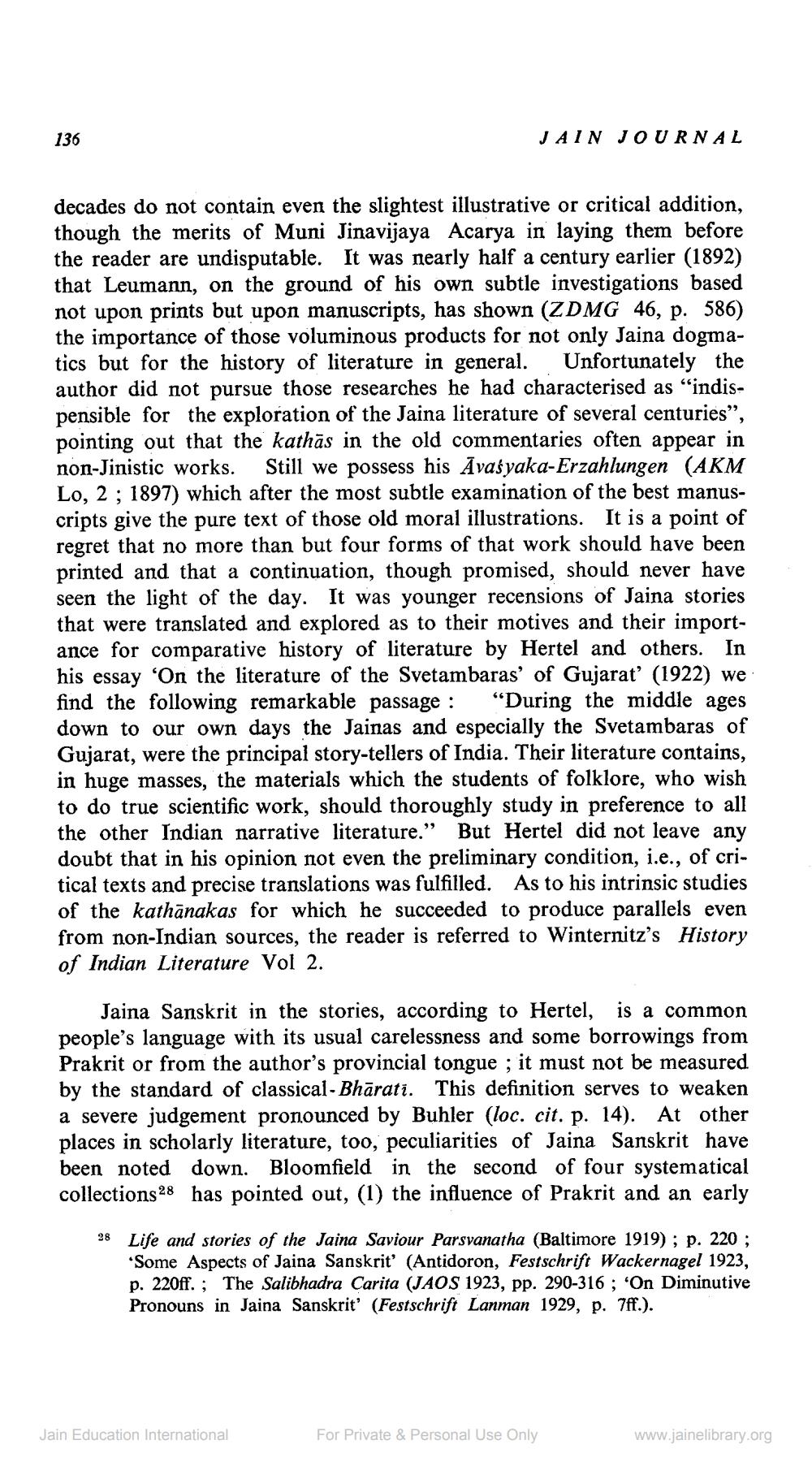________________
136
JAIN JOURNAL
decades do not contain even the slightest illustrative or critical addition, though the merits of Muni Jinavijaya Acarya in laying them before the reader are undisputable. It was nearly half a century earlier (1892) that Leumann, on the ground of his own subtle investigations based not upon prints but upon manuscripts, has shown (ZDMG 46, p. 586) the importance of those voluminous products for not only Jaina dogmatics but for the history of literature in general. Unfortunately the author did not pursue those researches he had characterised as "indispensible for the exploration of the Jaina literature of several centuries”, pointing out that the kathās in the old commentaries often appear in non-Jinistic works. Still we possess his Āvasyaka-Erzahlungen (AKM Lo, 2; 1897) which after the most subtle examination of the best manuscripts give the pure text of those old moral illustrations. It is a point of regret that no more than but four forms of that work should have been printed and that a continuation, though promised, should never have seen the light of the day. It was younger recensions of Jaina stories that were translated and explored as to their motives and their importance for comparative history of literature by Hertel and others. In his essay 'On the literature of the Svetambaras' of Gujarat' (1922) we find the following remarkable passage : “During the middle ages down to our own days the Jainas and especially the Svetambaras of Gujarat, were the principal story-tellers of India. Their literature contains, in huge masses, the materials which the students of folklore, who wish to do true scientific work, should thoroughly study in preference to all the other Indian narrative literature." But Hertel did not leave any doubt that in his opinion not even the preliminary condition, i.e., of critical texts and precise translations was fulfilled. As to his intrinsic studies of the kathānakas for which he succeeded to produce parallels even from non-Indian sources, the reader is referred to Winternitz's History of Indian Literature Vol 2.
Jaina Sanskrit in the stories, according to Hertel, is a common people's language with its usual carelessness and some borrowings from Prakrit or from the author's provincial tongue ; it must not be measured by the standard of classical - Bhārati. This definition serves to weaken a severe judgement pronounced by Buhler (loc. cit. p. 14). At other places in scholarly literature, too, peculiarities of Jaina Sanskrit have been noted down. Bloomfield in the second of four systematical collections 28 has pointed out, (1) the influence of Prakrit and an early
28
Life and stories of the Jaina Saviour Parsvanatha (Baltimore 1919); p. 220 ; Some Aspects of Jaina Sanskrit' (Antidoron, Festschrift Wackernagel 1923, p. 220ff. ; The Salibhadra Carita (JAOS 1923, pp. 290-316 ; 'On Diminutive Pronouns in Jaina Sanskrit (Festschrift Lanman 1929, p. 7ff.).
Jain Education International
For Private & Personal Use Only
www.jainelibrary.org




